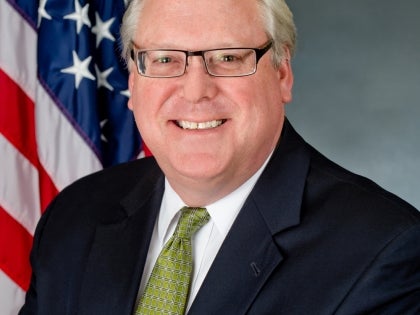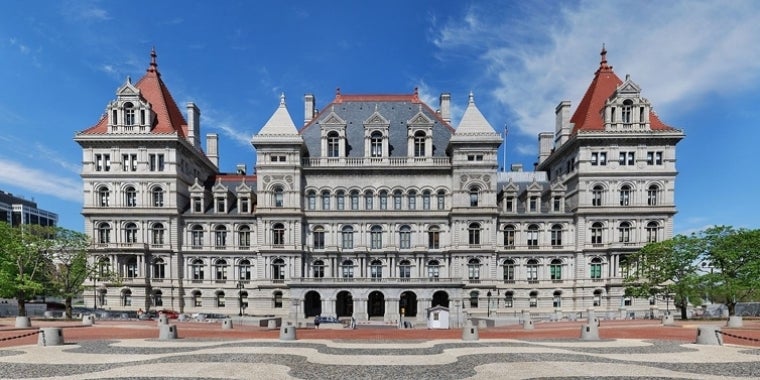
Senator O'Mara's weekly column 'From the Capitol' ~ for the week of January 10, 2022 ~ 'A billion here, a billion there spells out-of-control spending'
January 10, 2022
-
ISSUE:
- State budget

Senator O'Mara offers his weekly perspective on many of the key challenges and issues facing the Legislature, as well as on legislative actions, local initiatives, state programs and policies, and more. Stop back every Monday for Senator O'Mara's latest column...
This week, "A billion here, a billion there spells out-of-control spending"
Governor Kathy Hochul delivered her first State of the State message to the Legislature last week and, like these speeches traditionally do, hers put forth a broad but not very detailed direction to take New York State into the future.
That’s not necessarily a criticism. It’s not surprising. That’s what these speeches traditionally do and there was plenty in it to like for many special interest groups and individual constituencies.
But, as they say, the devil is always in the details.
What concerns me most at this juncture is the governor’s liberal use of the word “billions” – as in a billion dollars going here for this program, a billion there for that initiative, ten billion to enhance this service, a few billion more to pursue this agenda.
"Billions" has quickly replaced "millions" in state spending increases in recent years, which means more and bigger government. This is very concerning, especially for state and local taxpayers who foot the bill for government spending now and even more so in the future. Remember that we’re approaching the end of a fiscal year that started last April with former Governor Andrew Cuomo and the Democratic leaders of the Senate and Assembly enacting a budget that increased state spending by a whopping $18 billion, over 8%, and on top of the spending, hiked state taxes by nearly $5 billion.
For the first time in New York’s history, the state budget surpassed the $200-billion mark.
What’s in store this time around?
My concern – and Governor Hochul didn’t deliver anything in her State of State to put these fears at ease – is that state leaders could be eyeing long-term plans for higher and higher state spending again this year that, in the long run, will require higher and higher taxes, more state borrowing, and an even more unsustainable debt burden for future generations of state and local taxpayers.
My concern is that the vision that Governor Hochul and legislative leaders will soon begin formulating for the future of New York could spell even harder times ahead for state and local taxpayers, small businesses and manufacturers, and already hard-pressed upstate communities, economies, and workers.
Further, she signaled a lowering of the farm worker overtime threshold by proposing a tax credit to farmers for increases in overtime wages. This will place the cost of raising migrant farm workers’ wages onto the backs of all state taxpayers.
I have stressed throughout the COVID-19 response over the past two years that we need an open and full discussion on the best ways to move forward for this entire state, upstate and downstate. It requires a restructuring of New York government, strengthening the state-local partnership, and getting to work rebuilding New York with the right priorities and long-overdue commonsense reforms, especially fiscal responsibility.
The loudest alarm throughout the past decade is that New York State remains one of America’s highest-taxed, most expensive, most debt-ridden and overregulated states -- with one of the worst business-friendly climates in the nation to boot. Even after the hard road we’ve all been on, it’s mind-boggling that the governor and top legislative Democrats could still stay in pursuit of bigger and bigger state government spending.
New York remains one of the highest-taxed states in America. We are one of the most overregulated states in the nation. Our local governments and local property taxpayers continue to foot the bill for one of the country’s heaviest burdens of unfunded state mandates. Still, the so-called progressive vision does not emphasize broad-based, lower taxes for workers and employers. Nothing about the pitfalls of overregulation or the drain of unfunded state mandates on counties and local property taxpayers. What about the high cost of living that is driving people, especially young people, out of Upstate New York?
One-party control of state government has already produced billions of dollars of short- and long-term spending requiring billions of dollars in new taxes, fees, and borrowing for future generations of state and local taxpayers.
This short-term pursuit of a hard-left, extreme-liberal political agenda appears to be the priority over a long-term, sustainable future for upstate, middle-class communities, families, workers, and taxpayers.
Governor Hochul did not mention the bail reform debacle or crime victims, but did propose more benefits for convicts.
In contrast, I will join my Republican colleagues in the Senate and Assembly to try to set rebuilding priorities for post-coronavirus government in New York throughout the coming year and into the foreseeable future – priorities that will focus on, among others, Upstate’s post-pandemic communities and economies by steadily reopening and rebuilding increasing numbers of economic sectors, regulatory and tax reform, mandate relief, bail reform, and to refocus our criminal justice system on the victims of crime rather than coddling the perpetrators.
I look forward to keep working with legislative colleagues and local leaders across the Southern Tier and Finger Lakes regions to keep attention focused on unfunded state mandates, job-killing state regulations, and a state and local tax burden that hurts family budgets and keeps New York’s business climate one of the worst in the nation.
It’s time to take back Upstate’s rightful place and restore a more responsible and reasonable approach to governing.
###
Share this Article or Press Release
Newsroom
Go to Newsroom

